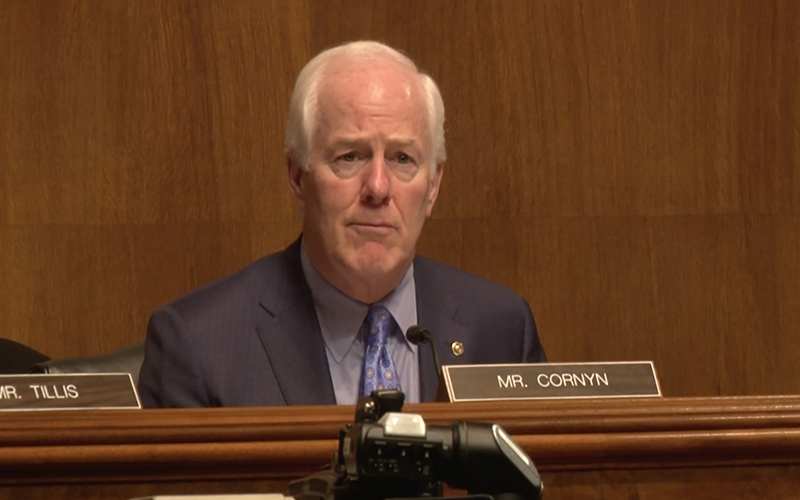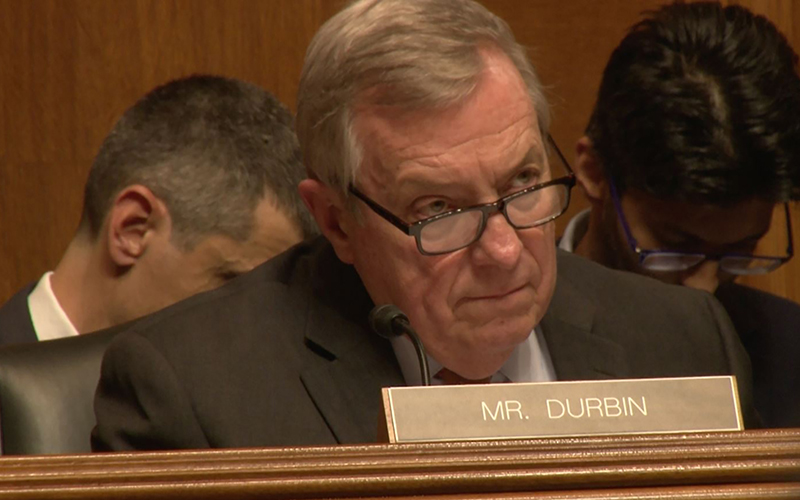WASHINGTON – More than 684,000 cases are waiting to be heard in immigration courts across the country – 10,422 of them in Arizona – a number that is only expected to grow after the Trump administration cuts an immigrant legal assistance program this month.
In addition to its plan to cut the Legal Orientation Program, the Justice Department is also considering a quota system for immigration courts. That plan will only make the problems worse, judges and policy experts told the Senate Judiciary Committee on Wednesday.
Sen. John Cornyn, R-Texas, called the case backlog “unacceptable” but said there’s blame to go around. Congress has not adequately funded the courts, he said, while advocates have been unable to reach consensus between those who want to fix the system and those who want a complete overhaul.
“Unfortunately, Congress has never provided the full extent of support staff and immigration judges that are truly needed to eliminate backlog,” Cornyn said.
“As a result, backlog continues and will continue to grow, from 129,000 cases in 1998 to a staggering 684,000 as of February 2018,” he said, citing numbers from the Executive Office of Immigration Review.
Unlike most federal courts, immigration courts are part of the executive branch and under the control of the Justice Department and the attorney general, who has broad authority over how the courts are run.
Early this month, Attorney General Jeff Sessions proposed a quota system that would tie an immigration judges’ performance review to the number of cases handled, in an effort to cut into the growing backlog of cases.
But Ruben Reyes, a Phoenix-based immigration attorney, said that plan is likely to backfire.
Reyes said quotas could potentially stall efforts to clear the backlog by “only further generating appeals, as judges worry more on clearing the amount of cases they have rather than making sure they are properly handled.”
“The independence of the judiciary is extremely important and you have two main issues here: The Department of Justice’s quota system to alleviate backlog, and the elimination of the LOP program,” Reyes said. Those moves would “do very little in helping both the immigrations courts and those who rely on them,” he said.
“If the goal is to expedite the removals of these cases, you are only going to see an increase in litigation and it’s only going to get worse,” Reyes said. “You cannot use the courts as means for political expediency – you are protecting the integrity of our entire legal system.”
Sen. Dick Durbin, D-Illinois, said during Wednesday’s hearing that immigration courts “have always faced a fundamental contradiction” of who to serve, but that the government has a constitutional responsibility to uphold due process in those courts.
“Under the Constitution’s separation of powers, a judge is supposed to be an independent adjudicator who fairly weighs the claims of both parties in an adversarial process,” Durbin said. “But in the immigration courts, the judge is appointed by and is an employee of one party – the government, specifically the attorney general.
“This conflict makes it difficult to uphold the promise of the due process clause for immigrants, who rely on the immigration courts to decide literally life or death matters,” Durbin said.
One effort to help those languishing in immigration court is the Legal Orientation Program, which assisted more than 50,000 immigrants last year in 38 large detention centers. It provides the accused with basic legal assistance, according to the Vera Institute of Justice, which provides counsel for the program.
The institute said in an April 11 statement, in response to a Justice Department announcement to end the program after April 30, that it had “unquestionably positive effects on the immigration court process and terminating it would be fiscally irresponsible.”
Immigration Judge A. Ashley Tabaddor said the program “has cut down the amount of time the judge has to spend explaining doctrine and answering questions.”
“A majority of the judges that are presiding over cases in various detention facilities have told us that LOP has been a very effective tool in making sure the cases are handled in a fair manner and that there is due process for the immigrant,” said Tabaddor, the president of the National Association of Immigration Judges.
She also said the proposed quota system, which would take effect on Oct. 1, would “critically impair” the current system by creating an “unrealistic” standard about the number of cases judges should take.
She and others said the problem is the number of judges: There are about 375 now, she said, not nearly enough to keep up with the caseload, much less make a dent in the backlog of 684,000 cases.
Reyes said it is “only a matter of time” before lawyers and advocates push back on the restrictions.
“From my perspective, there is a really strong resistance within the bar association, scholars, and within the unions to unyoke the judges from these kind of quotas,” Reyes said. “You remove what should be a deliberate and thoughtful process and replace it with a mechanical assembly line of what should be done, and you only get more problems.
“We are a nation of laws and are founded on integrity – not just political expediency,” he said.

